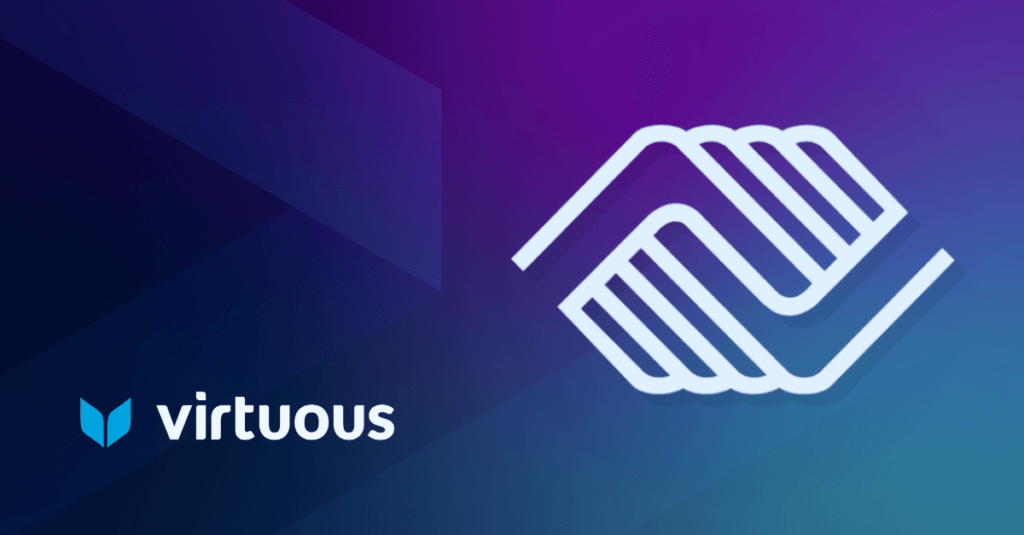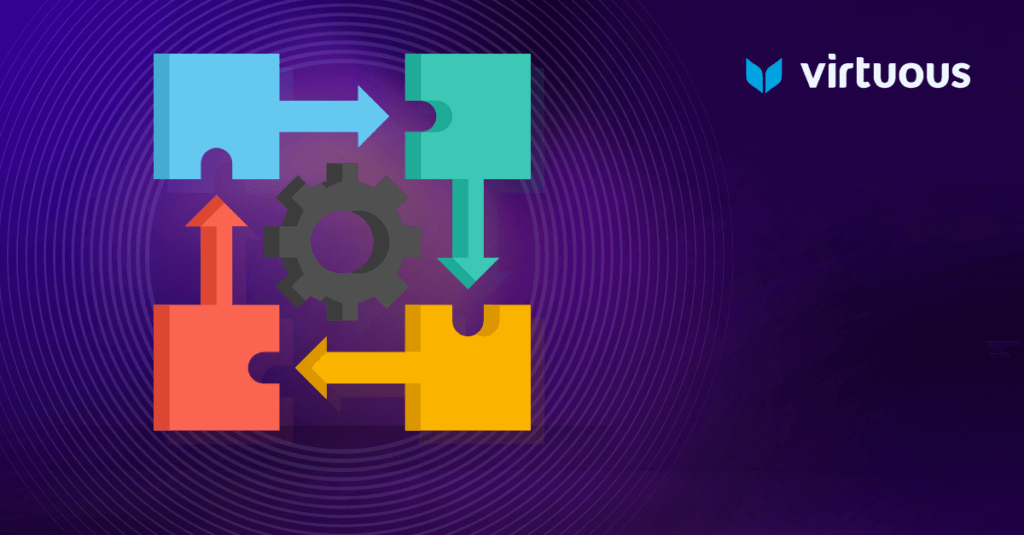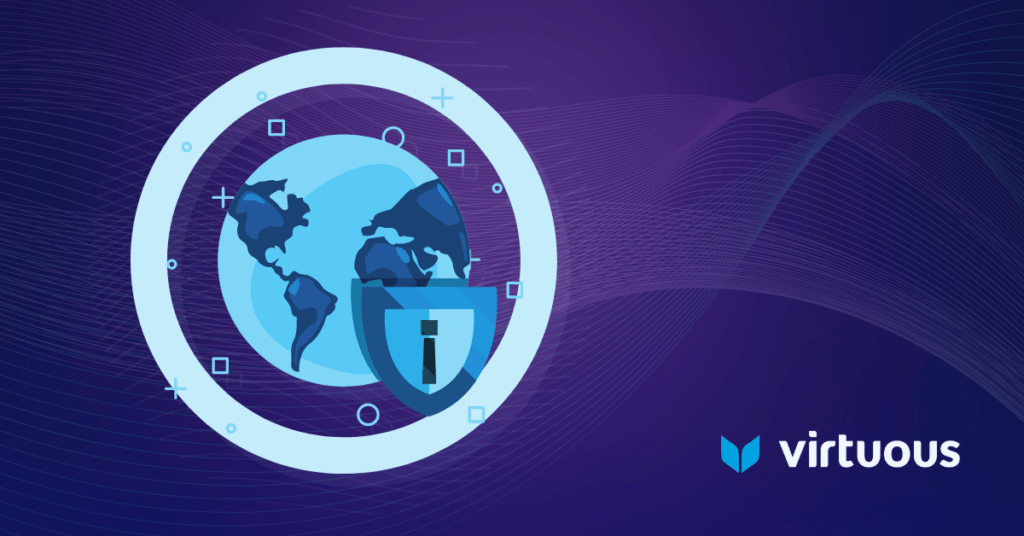Things are looking up. You have your organization’s vision and strategy in place. You have staff that are dedicated to your mission. You have your nonprofit data, CRM, business processes, and reports. However, something still feels off! You have all the right operational components but have yet to see the expected results. All of the parts don’t seem to fit together.
Sadly, aligning technology with strategy doesn’t just magically happen overnight. You must audit your nonprofit data ecosystem holistically to connect the pieces and maximize results.
What is a Nonprofit Data Ecosystem?
What do we mean when we say ecosystem? Think back to 4th grade science class. This is where we learned that an ecosystem applies to a biological community of interacting organisms consisting of plants, animals, and fungi that interact with each other and the surrounding environment. Each organism in the ecosystem plays an important role, and the removal of any element is a threat to sustainability and resilience.
A nonprofit data ecosystem is like a biological ecosystem. Instead of plants, animals, and fungi, we are interested in the complex network of interconnected systems formed by people, processes, data, and technology. For example, think of how your CRM, financial systems, and marketing initiatives interact. It is these systems working together that support the data needs of our organizations.
Just like the biological ecosystems we studied, data ecosystems are dynamic and constantly evolving. They can also be delicate and thrown off balance by change, sometimes unexpectedly. Our organizations run on data, and without efficient and effective ecosystems for this data to exist, they will fail to thrive. This is precisely why we need to prioritize the health of our technology ecosystems.
Why Your Nonprofit Data Ecosystem Matters
When aligned, our technology ecosystems help data-driven decision-making, enable our organization to collect and analyze data from various sources, save us time and energy, and provide a complete view of the business—allowing for stronger and more strategic decision-making. They can also enhance operational efficiency, allowing for better collaboration among teams and departments, break down silos, and improve resource management.
As well, good ecosystem management ensures compliance—helping our organizations meet regulatory requirements, strengthen data security, and helping to reduce the risk of legal issues, financial loss, and data breaches. Circling back to our metaphor, to truly steward and care for our environment—to maximize results—we need to ensure all the individual components are thriving and working as a system together.
Key Optimization Areas to Target
Now that you understand what a nonprofit data ecosystem is and why it matters, let’s talk more specifically about how you can optimize your systems—or how you can make your work world a better place to live.
Onboarding & Training
Merely implementing a new CRM does not guarantee success. To fully leverage your investment, it is crucial to provide comprehensive training to your staff both at go-live and beyond.
A well-planned training program is essential to ensuring that staff understand your business processes and know how to effectively use the available tools.
At the base level, staff should understand the fundamentals of your CRM, how to use basic reports, and be familiar with the policies and procedures around your nonprofit data. You can achieve this by building a consistent training program for your staff.
Don’t just train new employees once when they join the team—meet periodically to get them up to speed throughout the onboarding process, and then have scheduled follow-ups throughout each year. Set up quarterly and ongoing training, as needed, to ensure everyone is up to speed when something changes—such as version upgrades and modified policies. By focusing on timely and relevant training, you set staff up for success and teach them how to thrive within their ecosystem.
Documenting Your Nonprofit Data & Processes
Finding the time to document your work can be tricky—it often gets lost in the everyday shuffle or deprioritized in place of higher-profile activities. Documentation supports key activities—including process control and refinement, data management, reporting, and onboarding. Within the organization, documentation may have many informal owners, making it difficult to develop and control a holistic framework. Assigning a person to represent their functional team provides accountability in the process.
Maintaining documentation is crucial to a successful framework, as people need to be able to trust the resource.
It is helpful to centralize documentation in a single place. Gather documentation from each functional area to create a library. As new content is added, your organizational knowledge base grows, and cross-team transparency improves. Templatizing content is another way to standardize and speed up the documentation creation process.
Templates provide an easy-to-populate format to create new content and can help ensure your documentation is complete. For example, including a section for objectives encourages staff to consistently record contextual information about the process. Instead of viewing documentation as a standalone chore to be done at the end, consider the art of documenting as you go. Documentation will help conserve your processes and promote continuity.
Business Process Improvement
When undertaking a process improvement initiative, approach it like any other project—as a unique set of operations designed to accomplish a set of objectives. It has a distinct start and end, and a well-defined scope. Similarly, your process improvement project should introduce change and make a positive business impact.
Business Process Improvement is a method to optimize an organization’s processes for more efficient outcomes.
You will first want to define the problem or opportunity for improvement and understand the related business requirements. Once you have defined the project, you can move into the discovery stage. Consider best practices. Are there established industry standards that you should be using as a benchmark? Framing refinements against best practices can also be an effective way to position change.
Next, you will want to analyze the requirements and information to determine a path forward. You need to be mindful of addressing the root cause and not just the symptom. Maximizing efficiency is critical for organizations to reduce expenses, keep staff morale high, and fulfill their missions effectively. Look for opportunities for automation. By automating processes, organizations let the applications do repetitive, often error-prone work, taking care of all sorts of time-consuming tasks.
Communicate your proposed solution to all stakeholders prior to implementation. This will help get buy-in and improve adoption. Finally, put your design into practice. This may involve updating the current system configuration within your CRM or even developing a customization. The process may need some fine-tuning as you implement. You’ll likely go through a few iterations as you adjust the process. Focusing on effective and efficient business processes will keep your ecosystem running smoothly.
Nonprofit Data Management & Clean-Up
Accurate, complete, and up-to-date data is essential to a healthy ecosystem. By addressing data hygiene issues, you can make a huge impact in optimizing operations. Data quality starts with the entry process. Do you have standard policies and procedures for adding new constituents or entering gifts? Is it documented? Are you capturing the right information? Do you have what you need for reporting and analytics purposes?
Clear and accurate data is the foundation of a successful ecosystem.
Building processes to regularly audit and clean up data can help maintain your data. Consider how you can embed the quality control steps directly into the process. For example, audit gift data daily prior to running receipts. This will keep your data clean and reduce errors in donor acknowledgments. You may have some catch-up to do initially. Consider starting with high-priority data such as recent gifts or high-profile constituents to see results quicker. Our organizations and ecosystems run on data. Investing in data clean-up and supporting management initiatives will have a huge impact on achieving your goals.
System Integrations
It’s important to realize that, while your CRM may be your primary system, it is usually part of a larger data ecosystem. You’re a nonprofit organization, and having unified and/or integrated systems is critical to being able to gain and leverage a 360-degree view of constituents. Tracking supporters through all their various touchpoints—whether they are ticket buyers, donors, members, alumni, diners, or volunteers—would allow your organization to personally tailor communications and engagement strategy based on someone’s relationship(s) with you. But often, this data is siloed in multiple systems. Understanding where data lives, and how it flows, is the first step towards integrating your systems.
For nonprofits, integrating systems is essential to understand supporters fully and personalize engagement; yet, often data is scattered across multiple platforms.
At JCA, we are seeing more and more nonprofits leverage iPaaS (Integration Platform as a Service) tools, such as Workato, SnapLogic, Talend, and Jitterbit, to replace existing integrations and build new ones. These tools provide a low code/no code solution to data integration. They easily connect to thousands of commercial software products and offer intuitive drag-and-drop capabilities to enable non-technical users to create their own integrations.
A number of these products have workflow automation capabilities that can help organizations cultivate prospects and steward donors through predefined journeys. For instance, if a prospect indicates an interest on your organization’s website, an automated workflow could add them to a relevant mailing list, record them as an annual fund prospect, and send an email to your volunteer coordinator to call them. By optimizing data integrations to bridge your systems, you will make your data ecosystem whole.
Bringing it All Together
A data ecosystem is more than the sum of its parts. We need to consider each component individually and holistically to optimize processes, data, and technology, and to empower staff. It is our responsibility to ensure the entire ecosystem is the best environment for our organizations to thrive, and to do our part as citizens to make our (work) world a better place.
About the Author
James Walker is the Chief Technology Officer at JCA and oversees new initiatives involving technology. As a respected and longtime nonprofit technology professional, James brings a wealth of knowledge in software development, business intelligence, project management, and nonprofit leadership, as well as extensive experience in ticketing, marketing, advancement, and digital media.




